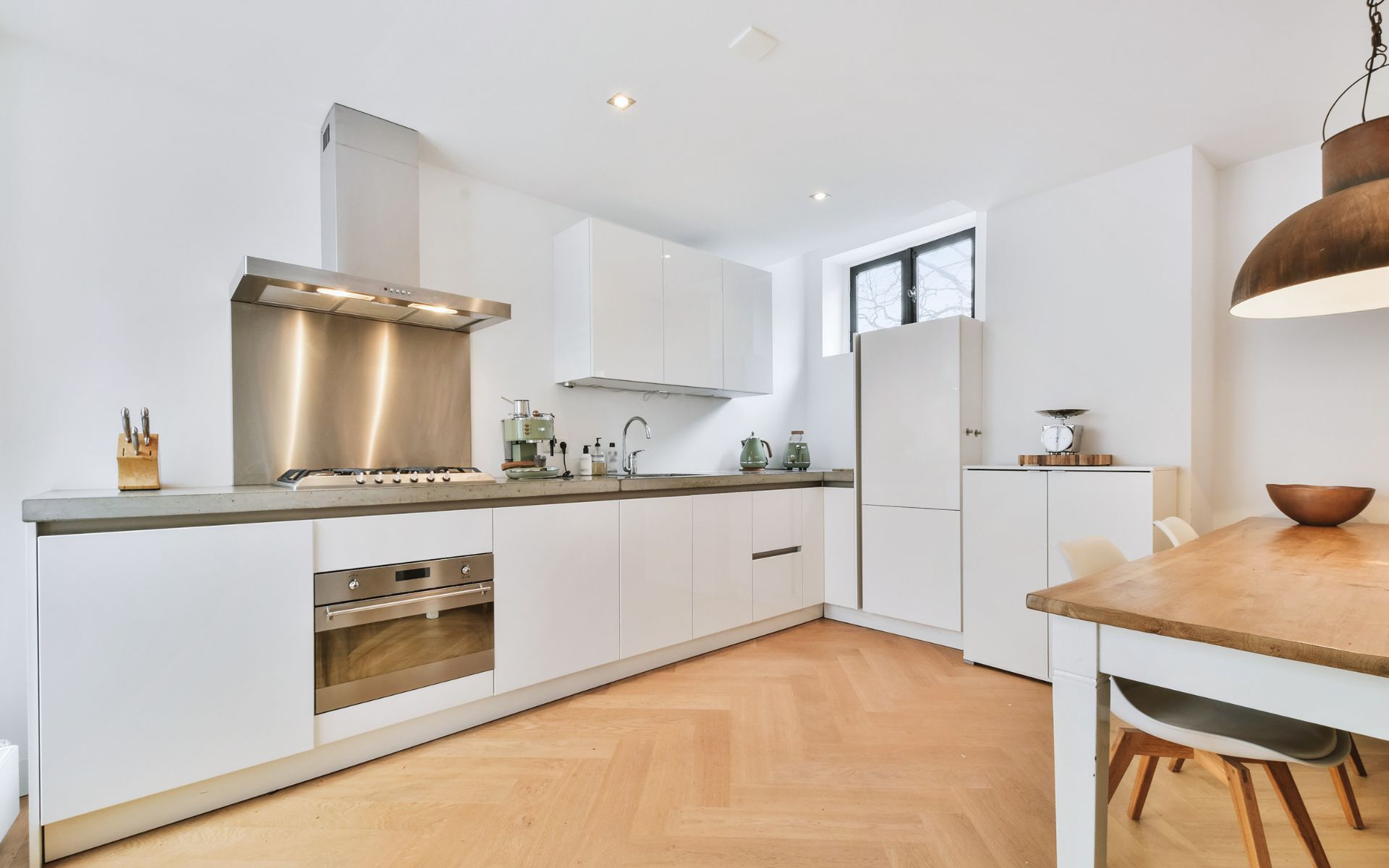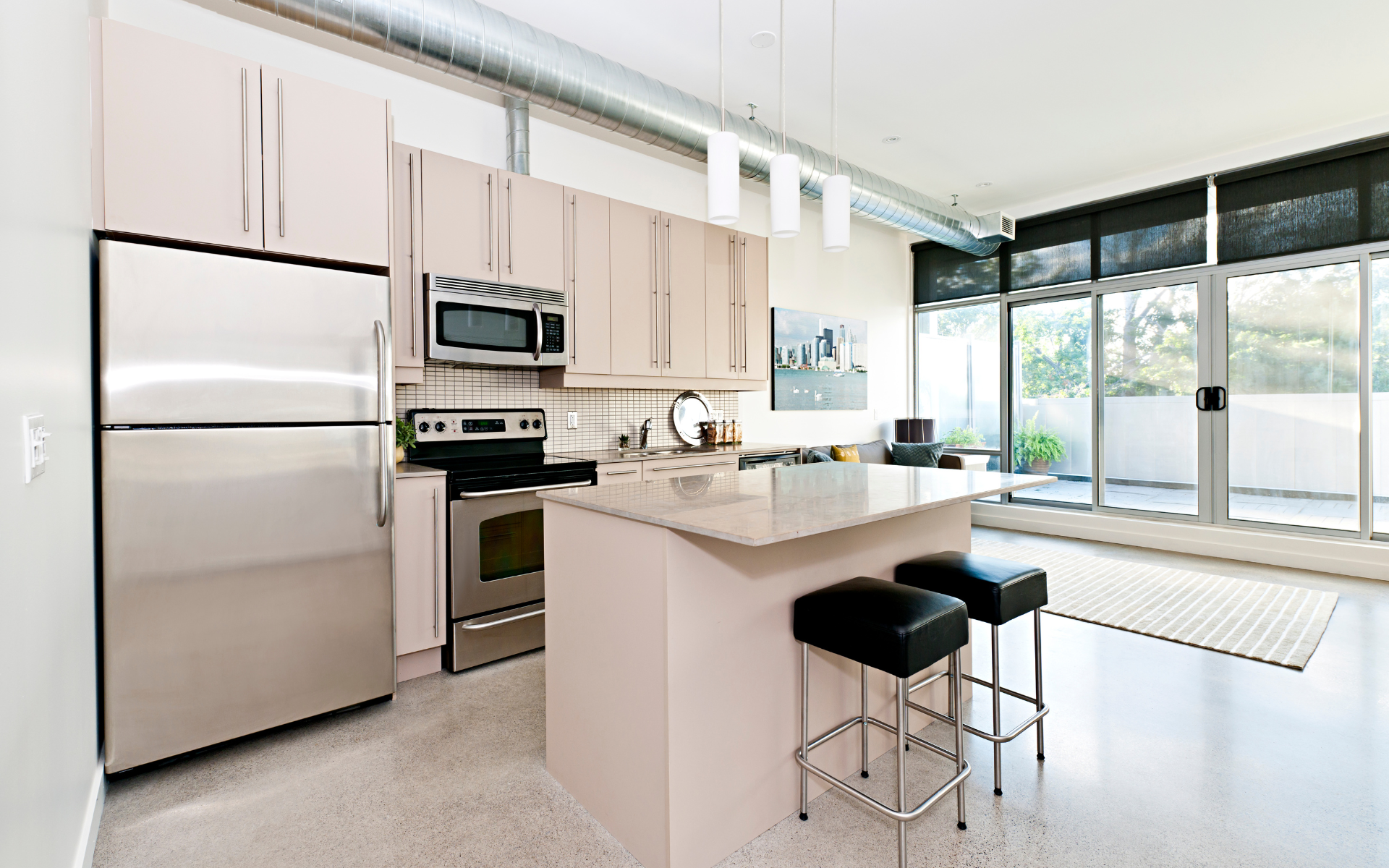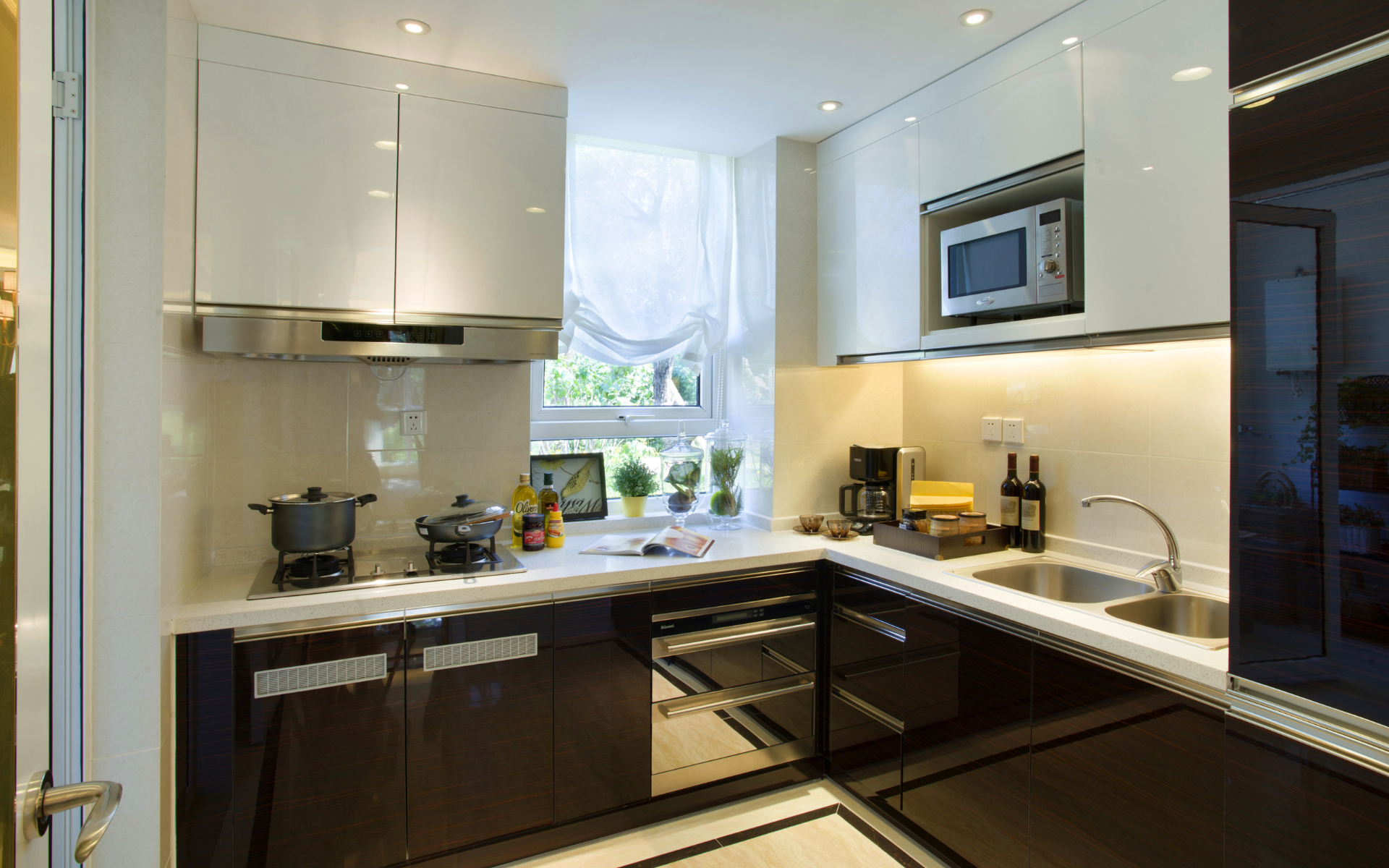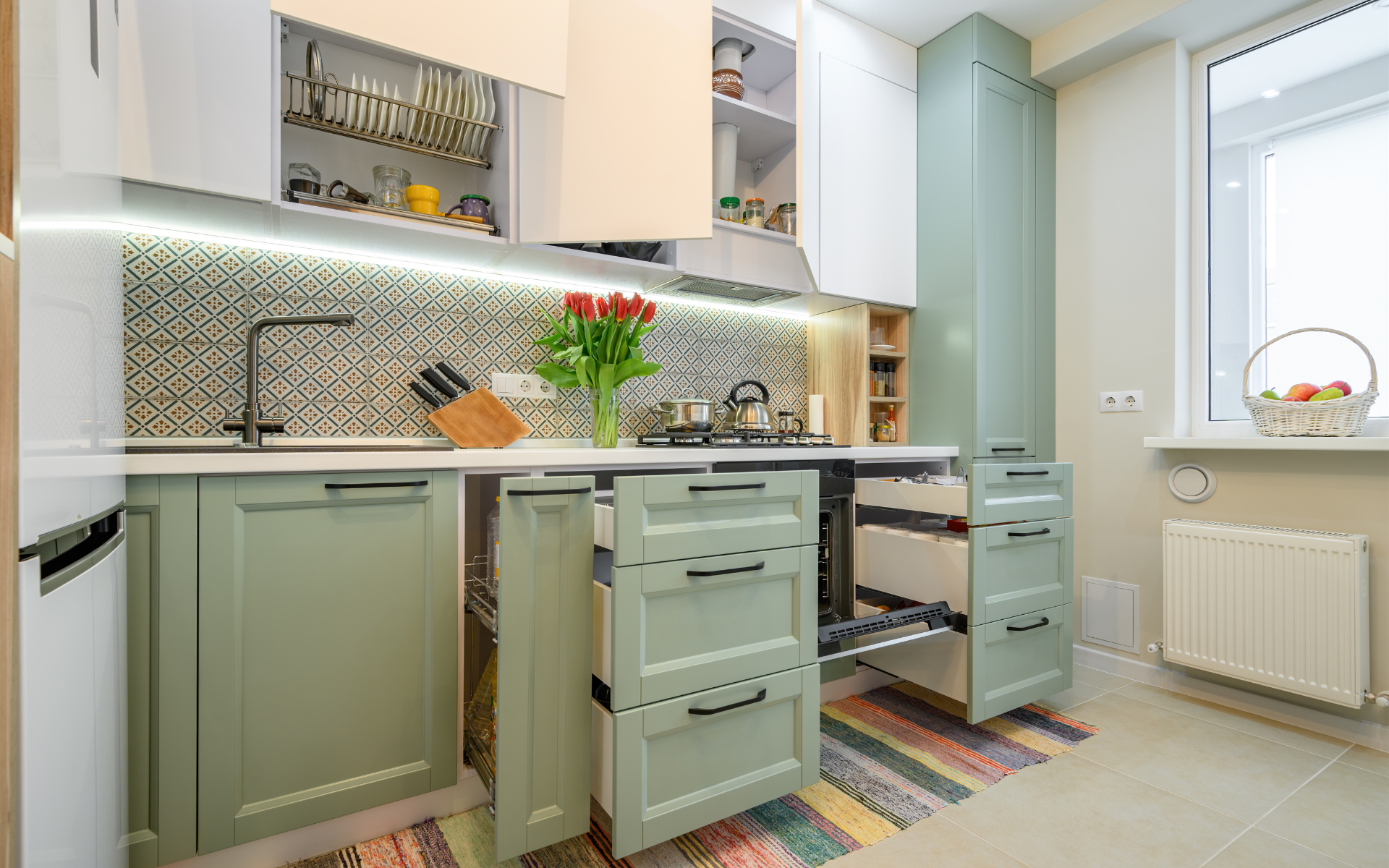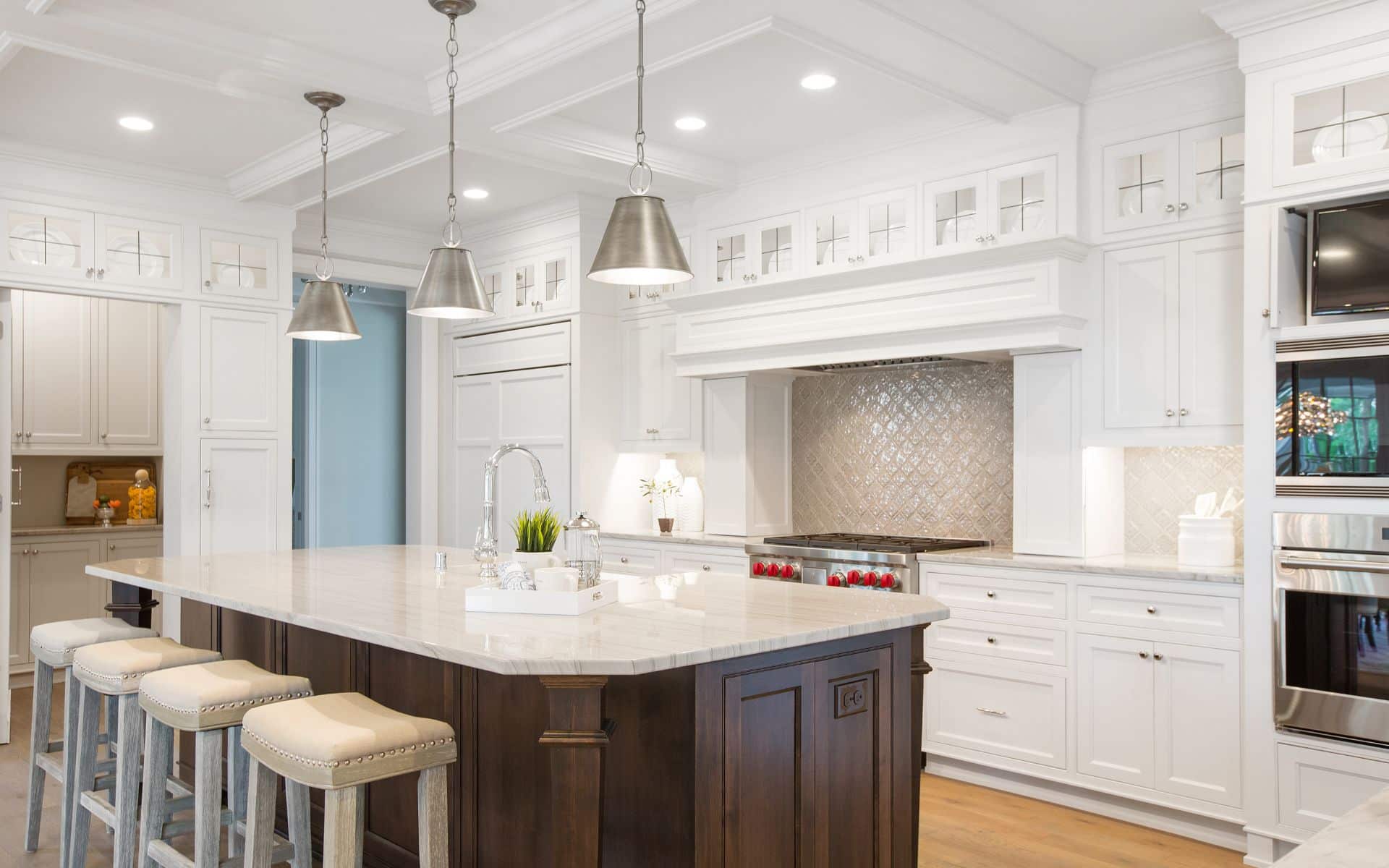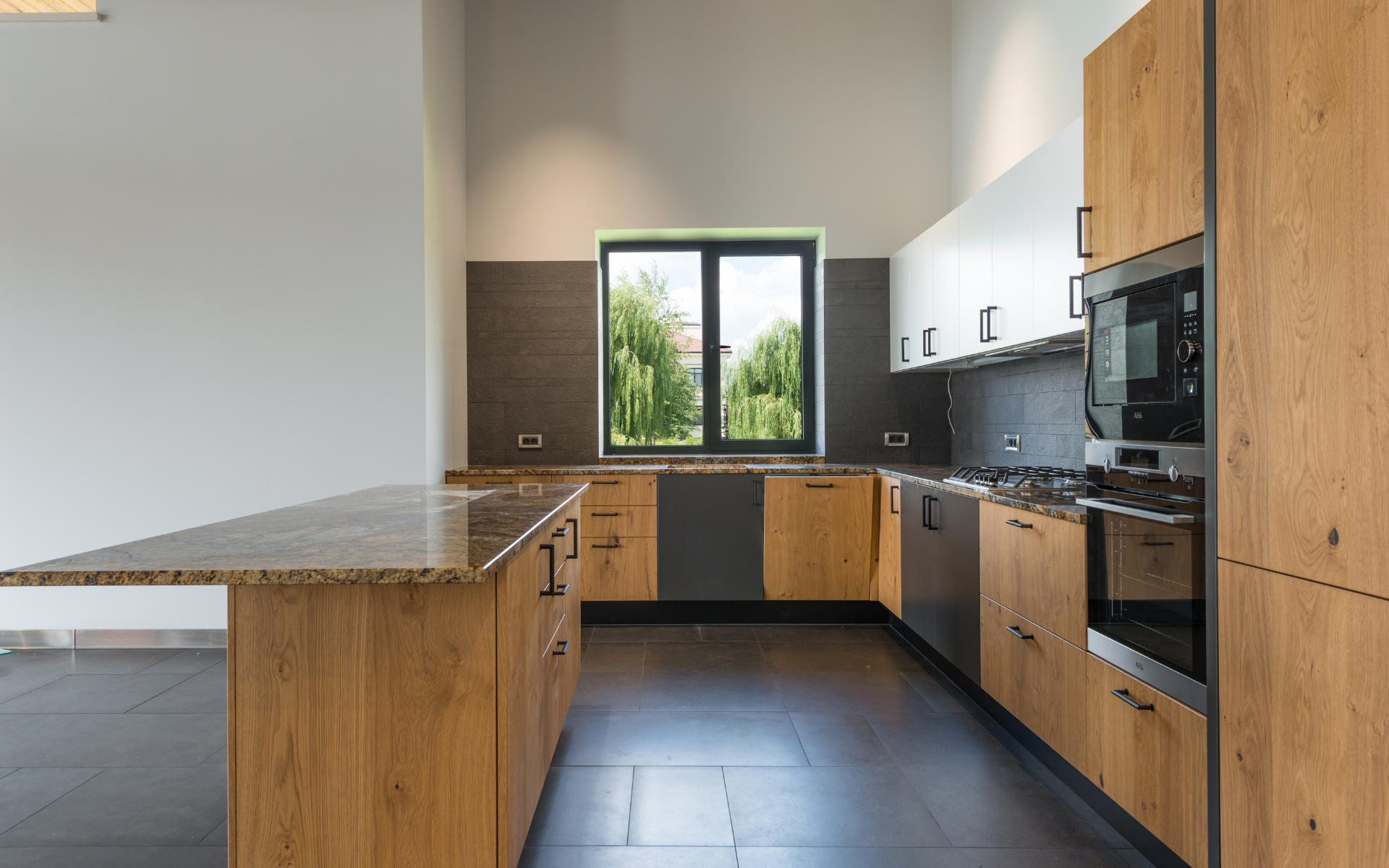Renovating the kitchen of a rental property can seem daunting, but it’s one of the best investments you can make. Not only does an updated kitchen and bath allow you to charge higher rent, but it also makes your property more appealing to potential tenants. Follow these tips for planning and executing kitchen renovations in your rental.
A Kitchen in Distress
Rental property kitchens tend to get a lot of wear and tear. Appliances break down, cabinets get grimy, and flooring succumbs to stains. Over time, the kitchen ends up looking dated and dingy, which makes your rental less desirable. Tenants expect a clean, functional kitchen stocked with modern amenities. If you neglect kitchen upgrades, you’ll have a harder time finding renters willing to pay top dollar.
An outdated kitchen prevents you from charging premium rent prices. It suggests to potential tenants that you aren’t investing in maintaining your property. They may wonder what other issues you’ve let slide. Additionally, worn or broken appliances inconvenience your current renters and force them to contact you frequently for repairs. This drains your time and resources. Both you and your tenants would benefit tremendously from a kitchen renovation.
Cooking Up Kitchen Upgrades on a Budget
The good news is that several affordable changes can help you transform an outdated kitchen into a luxurious, modern cooking space. Strategic kitchen remodels not only make tenants happy but also provide excellent ROI by increasing your rental income. Even minor improvements add real value. Review your budget, evaluate kitchen use patterns, and implement these impactful renovations:
1. Coordinate Appliances
While full kitchen appliance suites create a high-end look, replacing all machines at once gets expensive. Fortunately, mixing and matching stainless steel or black finishes still achieves a cohesive aesthetic. Swap out the most essential big-ticket items first, like the refrigerator, stove, and dishwasher. Then integrate new countertop appliances as your budget allows over time.
Aim for fingerprint-resistant stainless steel. Opt for fridges and dishwashers with sound insulation to keep operations quiet. Pick stoves and ovens with safety features like auto shut-off. Research reliability ratings before purchasing models. Create appliance harmony by choosing complementary finishes and functions.
2. Install Shelves
Maximize every inch of space with shelves. Attach them to walls, or inside cabinets or convert awkward corners into storage with angled units. Open shelving ranks among the most popular kitchen trends, creating an airy, modern atmosphere. Glass doors allow renters to display pretty dishware while preventing dust buildup.
Consider tenants’ storage needs too. Will shelving accommodate their cookware and small appliances? Are heights accessible? Mix closed and open shelving for ample item capacity. Incorporate some decoration-friendly ledges for tenants to personalize with their accents. Just ensure all materials are water-resistant.
3. Handles and Pulls for a Modern Grip
Over time, grease, moisture, and grime leave cabinet knobs and drawer pulls looking dirty. Switch old hardware for new stainless steel or matte black handles and pulls to instantly modernize the space. Hardware comes in endless style options, from sleek and contemporary to ornate and vintage. Go for easy-to-clean finishes rather than intricate designs that require frequent wiping.
Don’t forget the handles on appliances, sinks, and plumbing fixtures too. Replace outdated styles with coordinating finishes and shapes. For a cohesive look, opt for bar pulls on drawers and longer handles on doors. Add some personality by selecting hardware with unique shapes or textures. Just steer clear of overly trendy choices.
4. A Breath of Fresh Greens
Greenery instantly livens up any room. Add a living element to your newly renovated kitchen with leafy potted plants, succulents, or herbs. Tenants can care for plants themselves or you can maintain a maintenance service. If renters move greenery around, use plant caddies to prevent scratches on surfaces.
Aim for low-maintenance varieties that tolerate low natural light. Snake, ZZ and pothos plants purge indoor air while surviving neglect. Herb gardens allow tenants to snip seasoning for dishes anytime. Even faux foliage or a couple of vibrant blooms bring brightness. Place plants strategically rather than cluttering counters. They’ll make kitchens more welcoming without limiting prep space.
5. Simple Cabinet Facelifts
Repainting or adding new cabinets ranks among the most expensive renovations. Luckily several affordable modifications create similar luxe effects. For grimy cabinets, some thorough cleaning followed by a fresh coat of stain-resistant paint works wonders. Choose a muted neutral shade that appeals to diverse renters’ design styles.
Or apply decorative paper, removable wallpaper, or contact paper inside cabinets to camouflage flaws. These adhesive coverings come in numerous colors and patterns to match any décor. Upgrade cabinet accents too. Incorporate soft-close hinges, organizers, and handy pull-out storage. Install under-cabinet lighting for extra illumination during meal prep and cleanup. Consider cabinet modifications before committing to complete replacements.
6. Paint
A fresh coat of paint represents the easiest kitchen upgrade with dramatic impact. Even if you aren’t making structural changes, new wall colors make spaces appear cleaner and more updated. Neutral hues like grays, taupes, and soft whites appeal to tenants universally. Plus they disguise inevitable cooking splatters that might stain brighter paints.
Textured and matte finishes hide flaws in imperfect walls too. Use high-quality paints with primer built in for best coverage in fewer coats. Paint the ceiling and trim the same hue or slightly lighter for a spacious aesthetic.
Add vibrant accent walls or patterns over backsplashes if inspired. Just stick to neutral main colors most tenants find inoffensive. Update your drab kitchen paint first before evaluating if additional remodels are necessary down the road.
7. Timing of Renovations
Ideally, tackle kitchen overhauls between tenant turnover. This permits ample work time without impacting rents due to construction dust and noise. Plus it prevents renter belongings from damage during projects. If mid-lease renovations cannot wait, negotiate temporary rental decreases with tenants. Discuss an upgrade timeline for tenant convenience too.
During turnover, change locks and paint before bringing in upgraded appliances to avoid dings. Install any shelving or cabinets next before laying new flooring. Save accent details like art and plants for the end so nothing gets dusty or damaged. Build extra buffer days into renovation schedules in case projects run long. Clean thoroughly afterward for move-in ready spaces.
8. Fix the Flooring
While floors collect scuffs and stains in every room, high-traffic kitchens take extra abuse. Replace worn, outdated flooring ASAP for a clean, contemporary style. Water-resistant luxury vinyl plank offers a budget-friendly alternative to actual wood. The planks mimic realistic textures and come prefinished for easy DIY installation. Just ensure grout lines stand up to moisture.
For a splash of retro flair, patterned linoleum endures heavy use too. Or try stained concrete floors to complement industrial vibes. All these options clean easily and hide imperfections well. Include a few washable kitchen mats by the sink and stove to protect new floors from spills and heel marks. Fresh floors tremendously upgrade aesthetics and function.
9. Cover the Countertops
Countertops absorb much of the kitchen wear, succumbing to cuts, heat damage, liquids, and more. Replacing dingy countertops makes the whole room appear brighter. Cost-effective options like laminate stand up to damage while mimicking stone. Go for neutral granite-like patterns in light colors that complement most décor.
Quartz composite counters prove more durable, holding up to hot pans, stains, and scratches. Both budget and higher-end brands offer designer looks. Choose lighter quartz to lighten small kitchens. Add metal or leathered finishes for a modern texture. Just be sure to seal seams properly so moisture doesn’t seep underneath. Sprucing up worn countertops makes renters feel like the whole kitchen gained an upgrade.
10. Paint the Walls
A fresh coat of paint represents the easiest kitchen upgrade with dramatic impact. Even if you aren’t making structural changes, new wall colors make spaces appear cleaner and more updated. Neutral hues like grays, taupes, and soft whites appeal to tenants universally. Plus they disguise inevitable cooking splatters that might stain brighter paints.
Textured and matte finishes hide flaws in imperfect walls too. Use high-quality paints with primer built in for best coverage in fewer coats. Paint the ceiling and trim the same hue or slightly lighter for a spacious aesthetic.
Add vibrant accent walls or patterns over backsplashes if inspired. Just stick to neutral main colors most tenants find inoffensive. Update your drab kitchen paint first before evaluating if additional remodels are necessary down the road.
11. Cozy Rugs and Carpeted Floor
While rugs seem unexpected for kitchens prone to spills, they add cozy appeal. Neutral colors hide stains. Plus larger sizes allow pulling chairs out from tables without catching. Choose low-pile rugs where crumbs and dirt won’t hide. Synthetic fibers like polypropylene resist moisture, are easy to clean, and durable. Use breathable cotton rug pads underneath to prevent slips.
Place smaller rugs by the sink or prep areas. They absorb drips from clean dishes or close fridge doors to protect surrounding floors. Larger prints or braided styles in dining nooks warm up meals aesthetically. Just ensure materials handle inevitable kitchen messes. Then tenants can decorative rug style and placement to personal tastes.
Create carpet islands for furniture areas prone to scratches. Or use carpeted mats underneath tenant refrigerators and dishwashers to prevent floor dents. Place carpet pieces strategically rather than covering full floors. Ensure sizes allow for pulling chairs out without catching their legs. Use nonslip rug pads underneath for safety.
12. Get Vertical Storage
Another good idea for kitchen remodeling a rental property is to free up precious counter and cabinet capacity by maximizing vertical storage. Attach open shelving high on walls away from cooking messes but still easily accessible. Mount pots and pan racks at ceiling height to tidy tools right where you need them. Consider installing tracks for shelves that can be repositioned to suit tenants’ storage needs better.
Take cabinet organizational systems upwards too. Use racks, turntables, and vertically stacking bins for better item visibility. Don’t forget vertical concealed storage like hideaway cookie sheet holders too. Getting items up and off surfaces keeps kitchens looking tidy and intentional. Your eye naturally travels upwards to the newly utilized vertical real estate.
To wrap things up
Replacing major appliances or undergoing full kitchen remodels carries a hefty price tag. Luckily several small upgrades make rental kitchens appear luxurious without breaking budgets. New hardware, fresh paint, flooring replacements, shelving additions and more create designer details renters love. Just focus on durable, easy-to-clean materials that appeal to diverse tenants’ tastes.
You don’t have to invest in expensive granite counters to please renters. Little changes make a big difference. Plan upgrades wisely and your rental property kitchen transforms from dull to dazzling instantly!

